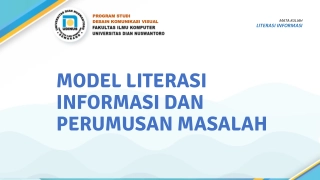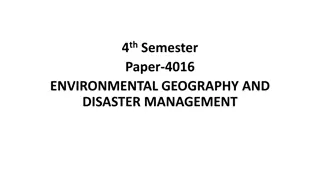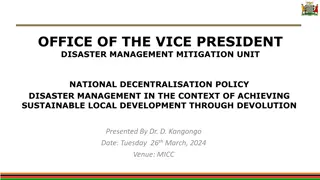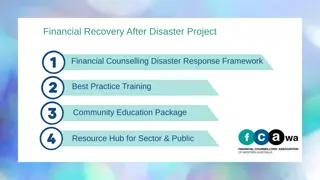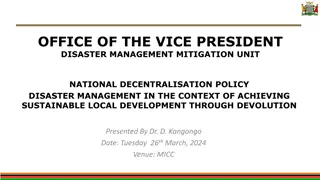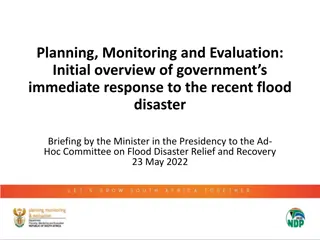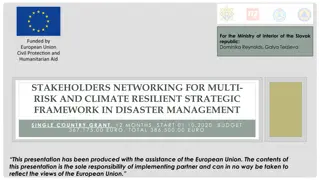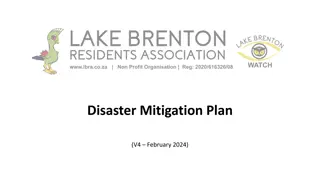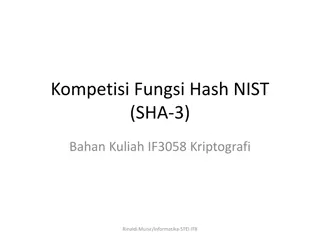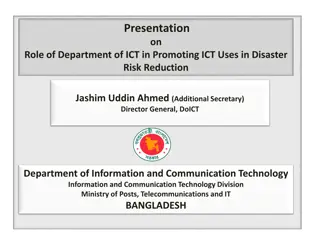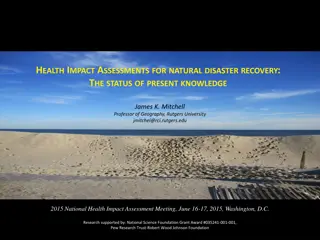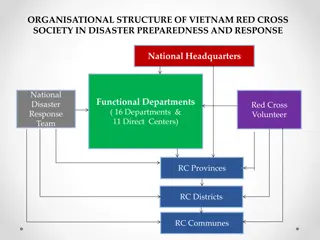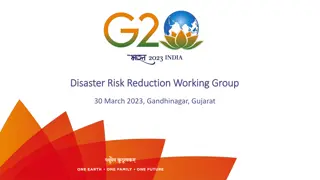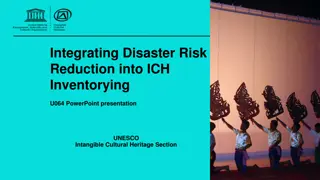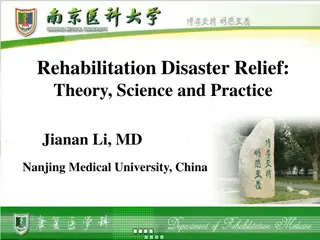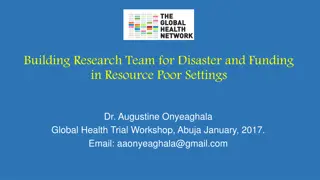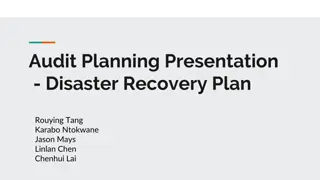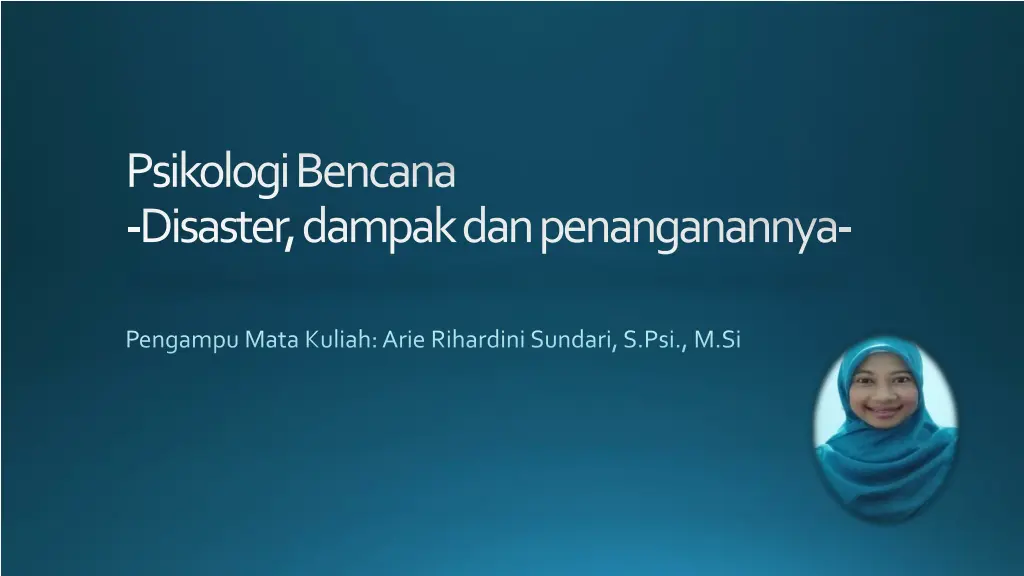
Understanding Disaster Psychology and Management in Indonesia
Explore the characteristics of disaster survivors, types of disasters in Indonesia, and key concepts in disaster mental health, including phases of disaster response. Learn about the impacts and approaches to handling disasters effectively.
Download Presentation

Please find below an Image/Link to download the presentation.
The content on the website is provided AS IS for your information and personal use only. It may not be sold, licensed, or shared on other websites without obtaining consent from the author. If you encounter any issues during the download, it is possible that the publisher has removed the file from their server.
You are allowed to download the files provided on this website for personal or commercial use, subject to the condition that they are used lawfully. All files are the property of their respective owners.
The content on the website is provided AS IS for your information and personal use only. It may not be sold, licensed, or shared on other websites without obtaining consent from the author.
E N D
Presentation Transcript
Psikologi Bencana -Disaster, dampak dan penanganannya- Pengampu Mata Kuliah: Arie Rihardini Sundari, S.Psi., M.Si
Karakteristik korban bencana : 1. Each survivor experiences the disaster through his or her own lens. 2. cultural experience and ethnic background may facilitate or interfere with a survivor s ability to engage with disaster relief efforts. 3. Those in the forty to sixty age range may be more at risk because of the competing demands of child rearing, jobs, and caring for elderly parents 4. single survivors may be more vulnerable than those who are married 5. increased marital conflict has been demonstrated following disasters. Karakteristik bencana (disaster) berdasarkan penyebab kejadian 1. natural vs. human causation, 2. degree of personal impact, 3. size and scope, 4. visible impact/low point, and 5. the probability of recurrence
Mengenal macam-macam bencana di Indonesia dan dampaknya 1. Gempa bumi 2. Tanah longsor atau tanah bergerak 3. Banjir 4. Kebakaran di pemukiman 5. Kebakaran hutan 6. Erupsi gunung berapi 7. Tsunami 8. Angin puting beliung Mana diantara macam-macam bencana di atas yang memiliki dampak kerugian terbesar ?
Mengenal macam pendekatan dalam penanganan bencana Key Concepts of Disaster Mental Health a. No one who sees a disaster is untouched by it. b. There are two types of disaster trauma individual and community. c. Most people pull together and function during and after a disaster, but their effectiveness is diminished. d. Disaster stress and grief reactions are normal responses to an abnormal situation. e. Many emotional reactions of disaster survivors stem from problems of living brought about by the disaster. f. Disaster relief assistance may be confusing to disaster survivors. g. They may experience frustration, anger, and feelings of helplessness related to Federal, State, and non- profit agencies disaster assistance programs. h. Most people do not see themselves as needing mental health services following a disaster and will not seek such services. Disaster phase : 1. Warning or Threat Phase 2. Impact Phase 3. Rescue or Heroic Phase 4. Remedy or Honeymoon Phase 5. Inventory Phase 6. Disillusionment Phase 7. Reconstruction or Recovery Phase
Key Concepts of Disaster Mental Health i. Survivors may reject disaster assistance of all types. j. Disaster mental health assistance is often more practical than psychological in nature. k. Disaster mental health services must be uniquely tailored to the communities they serve. l. Mental health workers need to set aside traditional methods, avoid the use of mental health labels, and use an active outreach approach to intervene successfully in disaster. m. Survivors respond to active, genuine interest, and concern. n. Interventions must be appropriate to the phase of disaster. o. Social support systems are crucial to recovery. (CMHS, 1994; See Chapter 1, page 1, for more information.)


